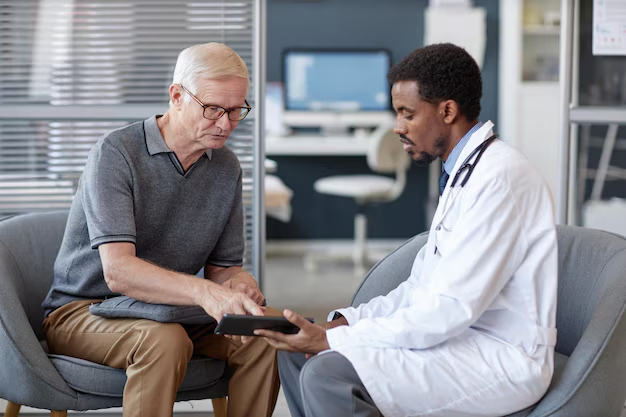Understanding Parkinson’s Diagnosis: How Neurologists Test for Parkinson's Disease
Imagine noticing a persistent hand tremor, slower movements, or changes in your balance while walking. These symptoms could be concerning, possibly hinting at Parkinson's disease (PD). A neurological disorder, Parkinson’s affects movement and is characterized by tremors, stiffness, and bradykinesia, or slowness of movement. If you or a loved one are experiencing such symptoms, understanding how a neurologist conducts tests for Parkinson’s can be empowering. Let's delve into the comprehensive approach adopted by specialists when diagnosing this condition.
The Role of a Neurologist in Diagnosing Parkinson’s
Neurologists specialize in the nervous system, encompassing the brain, nerves, and spinal cord. When there are signs of Parkinson’s, these specialists are crucial in determining whether the symptoms stem from this condition or something else entirely.
Initial Patient Assessment
The journey typically begins with a detailed medical history review. Neurologists ask about:
- Past medical issues and family health history
- Specific symptoms experienced, their onset, and progression
- Daily habits, medication use, and life stressors
Physical Examination: Following the history, a thorough physical examination checks:
- Motor symptoms: Essential signs include tremors (especially a resting tremor), muscle rigidity, and bradykinesia.
- Non-motor symptoms: These can include sleep disturbances, constipation, and reduced facial expressions.
Specialized Tests: Beyond Observation
While Parkinson’s is primarily diagnosed through clinical symptoms, some tests help rule out other conditions or support the diagnosis.
1. DaTscan Imaging
DaTscan is a tool used to visualize dopamine transporter levels in the brain. It's valuable because Parkinson's disease involves dopamine deficiency.
- How it works: Patients receive a small radioactive injection, and imaging reveals how dopamine is distributed in the brain.
- Utility: A DaTscan cannot confirm PD but indicates decreased dopamine activity consistent with Parkinsonian syndromes.
2. MRI or CT Scans
These imaging tests are generally used to rule out other neurological conditions, such as strokes or tumors, which can mimic Parkinson's symptoms. They aren’t used to diagnose Parkinson's directly.
3. Genetic Testing
Genetic tests might be recommended if there’s a family history of PD. While only a small percentage of Parkinson’s cases are hereditary, specific gene mutations like the LRRK2 or PARK7 genes can increase risk.
Understanding Diagnostic Criteria
Neurologists rely on criteria from the MDS Clinical Diagnostic Criteria for Parkinson’s Disease. This includes:
- Core symptoms: At least two of three of these—tremor, rigidity, and bradykinesia—should be present for a clinical diagnosis.
- Exclusion of other possible diagnoses.
- Consideration of supportive criteria, such as a positive response to Parkinson’s medications (like levodopa), which strongly suggests Parkinson's disease.
Differentiating Parkinson’s: Other Conditions to Consider
The diagnosis can be complex due to similarities with other disorders. Here are some conditions neurologists consider:
1. Essential Tremor (ET)
Often confused with Parkinson’s, essential tremor mainly causes action tremors rather than resting tremors typical of PD.
2. Multiple System Atrophy (MSA)
MSA shares several symptoms with PD but progresses more rapidly and involves autonomic nervous system dysfunction, like blood pressure instability.
3. Dementia with Lewy Bodies (DLB)
DLB shares symptoms but includes significant cognitive decline and hallucinations early in the disease course, unlike classic PD.
4. Progressive Supranuclear Palsy (PSP)
PSP involves postural instability and falls early on, with eye movement abnormalities distinct from PD.
Enhancing Diagnosis: Emerging Technologies and Approaches
As research on Parkinson’s progresses, new approaches aim to facilitate earlier and more accurate diagnoses.
1. Biomarker Research
Efforts are ongoing to find reliable biomarkers—substances that can be measured to indicate disease presence—to aid diagnosis and progress tracking.
2. Symptom Tracking Apps
Apps that monitor Parkinson’s symptoms are emerging, offering both doctors and patients powerful tools for tracking symptom progression and medication effects.
3. Artificial Intelligence (AI) and Machine Learning
These technologies are being explored to analyze complex datasets, potentially uncovering patterns that could improve diagnostic accuracy and prediction of disease progression.
Life After Diagnosis: Understanding Options and Supports
Receiving a Parkinson’s diagnosis can be overwhelming, yet understanding available options is crucial for patients and caregivers.
Medical Management
Medications: While there’s no cure, medications can effectively manage symptoms. Levodopa is the most common and targets dopamine deficiency.
Therapies: Physical, occupational, and speech therapies can aid in maintaining mobility, daily functioning, and communication.
Lifestyle Modifications
Regular exercise, a balanced diet, and establishing a consistent routine can help manage symptoms and improve quality of life.
Support Networks
Connecting with support groups and forming a strong healthcare team—comprising neurologists, therapists, and social workers—provides invaluable support for patients and their families.
Navigating the Future: Building Hope
Experts continually seek better diagnostic tools and treatments. From clinical trials for new drugs to research aimed at understanding the disease better, hope is on the horizon for those with Parkinson’s. Neurologists play a pivotal role not just at diagnosis but throughout the disease, providing guidance, managing changes, and supporting patients every step of the way.
Quick Facts & Takeaways 🧠✨
- Initial Steps: Neurologists assess medical history and conduct physical exams to look for core symptoms like tremors, rigidity, and bradykinesia.
- Testing Tools: DaTscan can suggest dopamine deficiency; MRI or CT scans rule out other conditions.
- Differential Diagnoses: Conditions like essential tremor and multiple system atrophy can mimic PD.
- Emerging Tech: AI, biomarker research, and tracking apps promise future diagnostic enhancements.
- Living with PD: Treatment includes medications, therapies, and lifestyle adaptations to manage symptoms and maintain quality of life.
- Support: Strong networks, including healthcare professionals and community groups, are essential for coping with Parkinson’s.
This guide aims to provide a thorough understanding of how neurologists test for Parkinson’s disease, highlighting the steps involved in reaching a diagnosis, and offering insights into the ongoing journey of managing this condition.

Related Articles
- Are There Environmental Causes Of Parkinsons
- Can Alcohol Cause Parkinson's
- Can Concussions Cause Parkinson's
- Can Females Get Parkinson Disease
- Can Head Trauma Cause Parkinson's
- Can Parkinson Disease Cause Dizziness
- Can Parkinson's Affect Eyesight
- Can Parkinson's Affect Memory
- Can Parkinson's Affect Speech
- Can Parkinson's Affect Vision